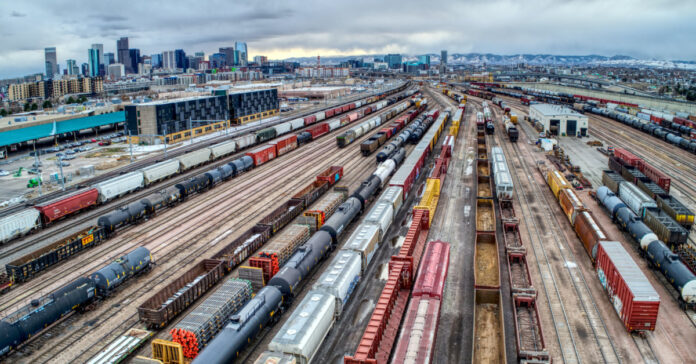After four of the twelve unions representing various freight railroad workers voted against the deal offered by the railroads and supported by President Biden, it looks like a rail strike is a possibility as early as December 9. So, what does that mean for you and me?
In the Short Term
Most of what you and I go out and buy on a day-to-day basis is transported by truck, not a rail car. So from the standpoint of groceries on the shelf and gas in the tank, a rail strike isn’t the end of the world. When we get out into January, that could change, but we’ll address that below.
UPS is rail’s biggest customer, and a strike could mean a delay in getting Christmas packages to you on time. I’d advise ordering any Christmas presents well before the strike date of December 9.
Many of the containers of goods that come in to ports end up on rail. If this traffic stops, we shouldn’t feel the impact in the next few weeks.
One of the biggest short-term disruption is likely to be Amtrak. Travelers planning to take the train to see friends and family over the holiday should consider alternate plans, such as driving. Commuter rail services that use freight lines could also experience disruptions.
Industry will also be pinched as large deliveries of raw materials, such as hoppers of plastic pellets, tank cars of chemicals, and delivery of ore cars, cease. The most immediate impact will be to manufacturing workers who may get sent home when there is no work because there are no raw materials.
In 30 to 60 Days.
Lots of companies will have built up their inventory of raw materials, but at some point, inventory will run out. For example, delivery of coal to coal-burning electrical generating plants could limit the amount of power available on the grid, leading to blackouts during periods of extreme cold and high electricity demand. Supplies of chlorine and other water purification chemicals at large municipal water treatment plants could dry up. If it is a harsh winter, municipalities could also run out of salt used to keep snow and ice from sticking to roadways.
A strike will diminish gas and diesel supplies as rail cars of oil from the Canadian Oil Sands and U.S. shale fields don’t make it to refineries on the Gulf Coast.
The supply of new cars will also be reduced as a side effect of the strike. First, new vehicles won’t be able to be delivered by train, which will slow distribution. Second, some of those chemicals and polymers that aren’t being delivered get made into car parts. That includes everything from the seat cushion foam to the headlight lenses and body panels to tires. At some point, manufacturing of both electric and traditional vehicles will cease and they will temporarily lay employees off. My guess is that the smart companies will close for the holidays and then never reopen until the supplies are flowing again. We won’t notice the shortage in dealer lots right away, but if you have ordered a car, your delivery date is likely to be pushed back.
After the Christmas rush, it may take stores longer to restock as warehouses will have less inventory as goods will pile up in ports. Sure, trucks can take some of the load, but not all of it. If the strike lasts, waiting times for parts and repairs will increase.
Recession and Inflation
We’ve seen how more money chasing fewer goods results in inflation. A rail freight strike will mean fewer goods are available, driving up prices and raising the rate of inflation. We could see this in a wide range of goods, including food and gas and diesel.
The longer the strike lasts, the more people will lose their jobs. Manufacturing will see layoffs first, followed by retailers. If new tires aren’t produced or delivered, then when inventory runs low, the guys working in your local tire shop won’t have jobs. When hundreds of thousands of people lose their jobs, they cut back on spending to save money. That means fewer dinners out, miles driven, little or no purchase of clothing and household goods, and no purchase of expensive items. This just perpetuates the recession as retailers and suppliers see lower demand and have to cut back.
We’re already looking at a worsening recession in 2023. A rail strike would make it even worse still.
Potential Outcome
Any disruption to our supply chain, which is barely back on firm ground, is going to cause problems. The longer it lasts, the harder it will be to restart our systems and get everything back up and running. So if the strike lasts, you need to prepare for shortages, outages, and delays.
The good news is that a rail strike is unlikely to last long. While the president can longer stop or delay the strike, Congress can pass a law ordering the workers back to work. They could force the union to accept the current agreement or even require them to keep working under the old one. The question is, will they interfere? Keep in mind that the democrats are supposed to be pro-labor and support unions. Will they have enough votes to force striking union workers back to work?
My guess is that they will, but not right away. So expect some minor disruptions, but nothing too terrible.
And in the meantime, if you are out of work, I hear the railroads are hiring.








